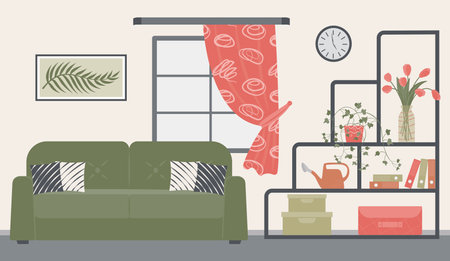Introduction to Lighting Terms
When it comes to choosing lighting for your home or workplace in the United States, understanding key terms like lumens, watts, and color temperature is essential. These concepts go beyond just picking out a bulb—they directly impact your energy bills, the atmosphere of your space, and even your environmental footprint. With so many lighting options on the market today, knowing what these terms mean can help you make smarter, more energy-efficient decisions. Whether youre upgrading your office lighting or simply replacing bulbs around your house, being familiar with how brightness (lumens), power consumption (watts), and color tone (color temperature) work together will ensure you get the right light for every setting—without wasting energy or sacrificing comfort.
2. What Are Lumens and Why Do They Matter?
When it comes to lighting, many people are used to thinking in terms of watts, but lumens are actually the key measurement for brightness. A lumen is a unit that measures the total amount of visible light emitted by a source. Simply put, the higher the lumens, the brighter the light will be. This is especially important when selecting energy-efficient lighting, like LEDs, because these bulbs use much less power (watts) to produce the same brightness as traditional incandescent bulbs.
Choosing the right lumen level depends on the function and size of each room. For example, a living room or bedroom might require softer, lower levels of brightness, while kitchens and workspaces often need more intense illumination for tasks. Here’s a quick guide to help you select appropriate lumen ranges for common spaces:
| Room or Application | Recommended Lumens |
|---|---|
| Living Room | 1,000–2,000 lumens |
| Bedroom | 800–1,500 lumens |
| Kitchen (General) | 3,000–4,000 lumens |
| Kitchen (Task Lighting) | 4,000+ lumens |
| Bathroom | 1,500–3,000 lumens |
| Home Office | 3,000–6,000 lumens |
When shopping for new light bulbs in the U.S., look for the “lumens” value on the packaging rather than just focusing on wattage. This ensures you’re getting the brightness you need while also maximizing energy efficiency. Remember: higher lumens mean more light output—not necessarily more energy consumption.

3. Watts: Power Consumption in Context
When it comes to energy-efficient lighting, understanding watts is crucial for making smart choices that benefit both your wallet and the environment. In the United States, wattage has traditionally been used as a shorthand for brightness—people often look for 60-watt or 100-watt bulbs without considering what those numbers really mean. However, wattage actually measures how much electricity a bulb uses, not how much light it gives off. This distinction is especially important with today’s advanced lighting technologies like LEDs and CFLs. Modern bulbs can produce the same amount of light as old incandescent bulbs while using far fewer watts. For example, a 10-watt LED bulb can emit as much light as a traditional 60-watt incandescent. That’s a huge difference in energy consumption, translating directly into lower utility bills each month. Choosing low-wattage, high-lumen lighting means you’re getting more light while using less power—a win-win for homeowners and renters alike. By upgrading to energy-efficient options, you’re not just cutting costs; you’re also reducing your carbon footprint and supporting sustainability efforts across the country.
4. Color Temperature: Setting the Mood
When it comes to energy-efficient lighting, understanding color temperature is key to creating the right atmosphere for each room. Color temperature is measured in Kelvins (K), and it describes the appearance of light provided by a bulb—ranging from warm, yellowish tones to cool, bluish hues.
Breaking Down the Kelvin Scale
The Kelvin scale helps you identify which light is best for specific settings. Here’s a quick breakdown:
| K Range | Description | Common Uses |
|---|---|---|
| 2700K–3000K | Warm White | Living rooms, bedrooms, dining rooms |
| 3500K–4100K | Cool White/Neutral White | Kitchens, bathrooms, work areas |
| 5000K–6500K | Daylight/Cool Daylight | Offices, garages, utility spaces |
Warm vs. Cool Lighting Options
Warm lighting (2700K–3000K) creates a cozy and inviting ambiance, perfect for relaxing spaces like living rooms and bedrooms. Cooler lighting (3500K–6500K), on the other hand, is crisp and energizing—ideal for task-oriented areas such as kitchens and offices where clarity and focus are important.
Selecting Color Temperature for Each Space
- Living Spaces: Opt for bulbs in the 2700K–3000K range to foster comfort and relaxation.
- Kitchens: Choose 3500K–4100K for a balance between warmth and visibility—great for meal prep and family gatherings.
- Offices: Go with 5000K or higher to promote alertness and productivity during work hours.
The Bottom Line
Selecting the right color temperature not only enhances energy efficiency but also ensures that every room feels just right for its intended use. Matching your lighting to your activities can make a noticeable difference in both comfort and performance throughout your home or workplace.
5. Practical Tips for Energy-Efficient Lighting
When it comes to making your home more energy-efficient with lighting, a few strategic choices can make a big difference. Here are some American-specific tips to help you get the most out of your lighting investments:
Choose the Right Bulb Types
Switching from traditional incandescent bulbs to LEDs or CFLs is one of the easiest ways to cut down on energy usage. LEDs, in particular, are recommended for their long lifespan, low energy consumption, and increasingly affordable price points in the U.S. market. When shopping, look for bulbs labeled as “LED” or “CFL,” and pay attention to lumen output rather than just wattage to ensure you’re getting the brightness you need.
Look for ENERGY STAR® Labels
Always check for the blue ENERGY STAR® label when purchasing new light bulbs or fixtures. Products with this certification meet strict efficiency guidelines set by the U.S. Environmental Protection Agency and Department of Energy, ensuring better performance and savings on your utility bills. ENERGY STAR® certified bulbs typically use about 70-90% less energy than standard incandescent bulbs and last 10-25 times longer.
Adopt Smart Lighting Habits
Maximize Natural Light
Take advantage of daylight by opening blinds and arranging furniture to make the most of natural light sources during daytime hours. This reduces reliance on artificial lighting and helps lower energy costs.
Turn Off Lights When Not in Use
Make it a habit to turn off lights when leaving a room, even if it’s just for a short time. Consider installing occupancy sensors or smart switches, which automatically turn lights off when rooms are unoccupied—a feature widely available in American hardware stores.
Use Dimmers and Timers
Dimmer switches allow you to adjust light levels according to your needs, further reducing energy use. Timers can automate lighting schedules, making sure lights aren’t left on unnecessarily.
Consider Color Temperature
Select bulbs with color temperatures that match each room’s purpose. For living spaces, a warmer (lower Kelvin) light creates a cozy atmosphere, while cooler (higher Kelvin) light is ideal for task-oriented areas like kitchens or offices. Proper selection improves comfort while optimizing energy efficiency.
Upgrade Fixtures Strategically
If your budget allows, consider upgrading outdated fixtures to those designed specifically for LEDs or other efficient technologies. Modern fixtures often maximize bulb performance and support broader energy-saving goals.
By combining these practical steps—choosing efficient bulbs, checking ENERGY STAR® labels, building good lighting habits, selecting appropriate color temperatures, and updating fixtures—you can significantly reduce your home’s energy consumption without sacrificing comfort or style.
6. Common Myths About Bulbs and Lighting
When it comes to choosing the right lighting for your home or office, plenty of myths can lead to confusion and wasted energy. Let’s clear up some of the most common misconceptions Americans face when shopping for light bulbs.
Myth #1: Brighter Is Always Better
Many people believe that a higher lumen count or wattage automatically means a better bulb. In reality, more light isn’t always necessary—or even desirable. For example, in a cozy living room or bedroom in a typical American home, excessively bright bulbs can create glare and discomfort. Instead, consider the function of each space: kitchens and workspaces may need brighter task lighting, while living areas benefit from softer illumination.
Myth #2: All LEDs Look Harsh or Unnatural
This misconception dates back to early-generation LEDs, which did often emit a cold, bluish light. However, modern LEDs are available in a wide range of color temperatures. Whether you want warm white for your dining room (comparable to traditional incandescent bulbs) or cool daylight for your garage workshop, there’s an LED option that matches your needs. Today’s LEDs can replicate the inviting ambiance many Americans expect in their homes.
Myth #3: Watts Indicate Brightness
It’s common for U.S. consumers to use watts as a shortcut for brightness because thats how incandescents were labeled for decades. But with energy-efficient bulbs like LEDs and CFLs, watts only measure power consumption—not light output. Lumens are the true measure of brightness. For example, a 10-watt LED might provide as much light as a traditional 60-watt incandescent, saving both money and energy.
Myth #4: You Can’t Use LEDs with Dimmers
While it’s true that not all LEDs are compatible with dimmer switches, many models on the market today are fully dimmable—just look for “dimmable” on the packaging. Upgrading to an LED-compatible dimmer switch is also an easy fix if you encounter flickering or limited dimming range in your home theater or dining area.
Takeaway for U.S. Households
The bottom line? Don’t let outdated beliefs keep you from making smart choices about energy-efficient lighting. Whether you’re illuminating a suburban kitchen in Texas or an apartment in New York City, understanding lumens, watts, and color temperature will help you create comfortable spaces while lowering utility bills.
7. Conclusion and Next Steps
By understanding the basics of lumens, watts, and color temperature, you’re now better equipped to make smart, energy-efficient lighting decisions for your home or business. Remember that higher lumens mean brighter lights, watts indicate energy usage, and color temperature sets the mood and functionality of each space. As you shop for new bulbs or fixtures, check product labels for these key specifications to ensure you’re getting both the performance and efficiency you need. Don’t hesitate to experiment with different combinations in various rooms—what works in your kitchen might not be ideal for your living room or workspace. Making thoughtful choices can help lower your energy bills, reduce environmental impact, and create comfortable, well-lit spaces tailored to your needs. Take this knowledge with you and start transforming your lighting today—your wallet and the planet will thank you.


